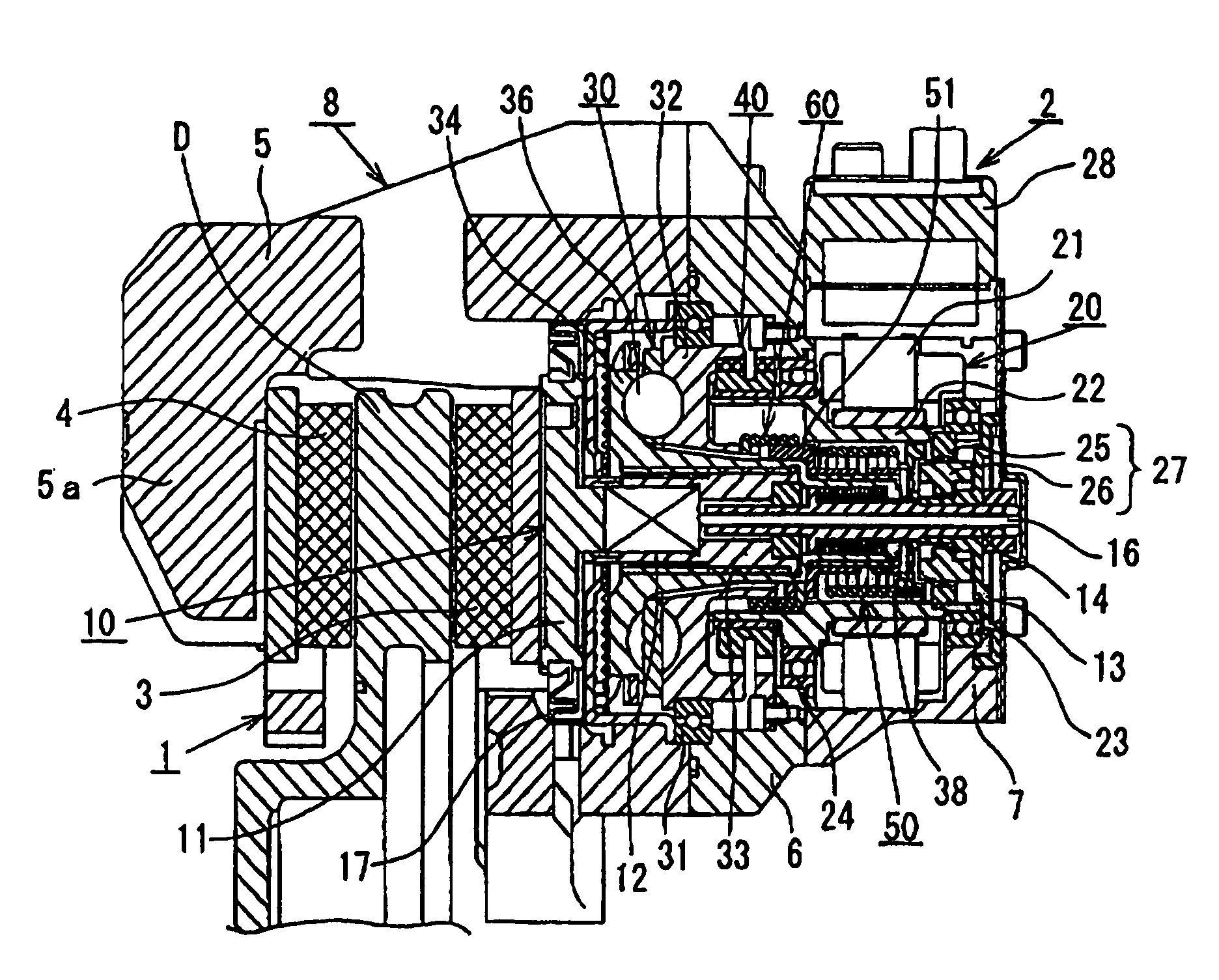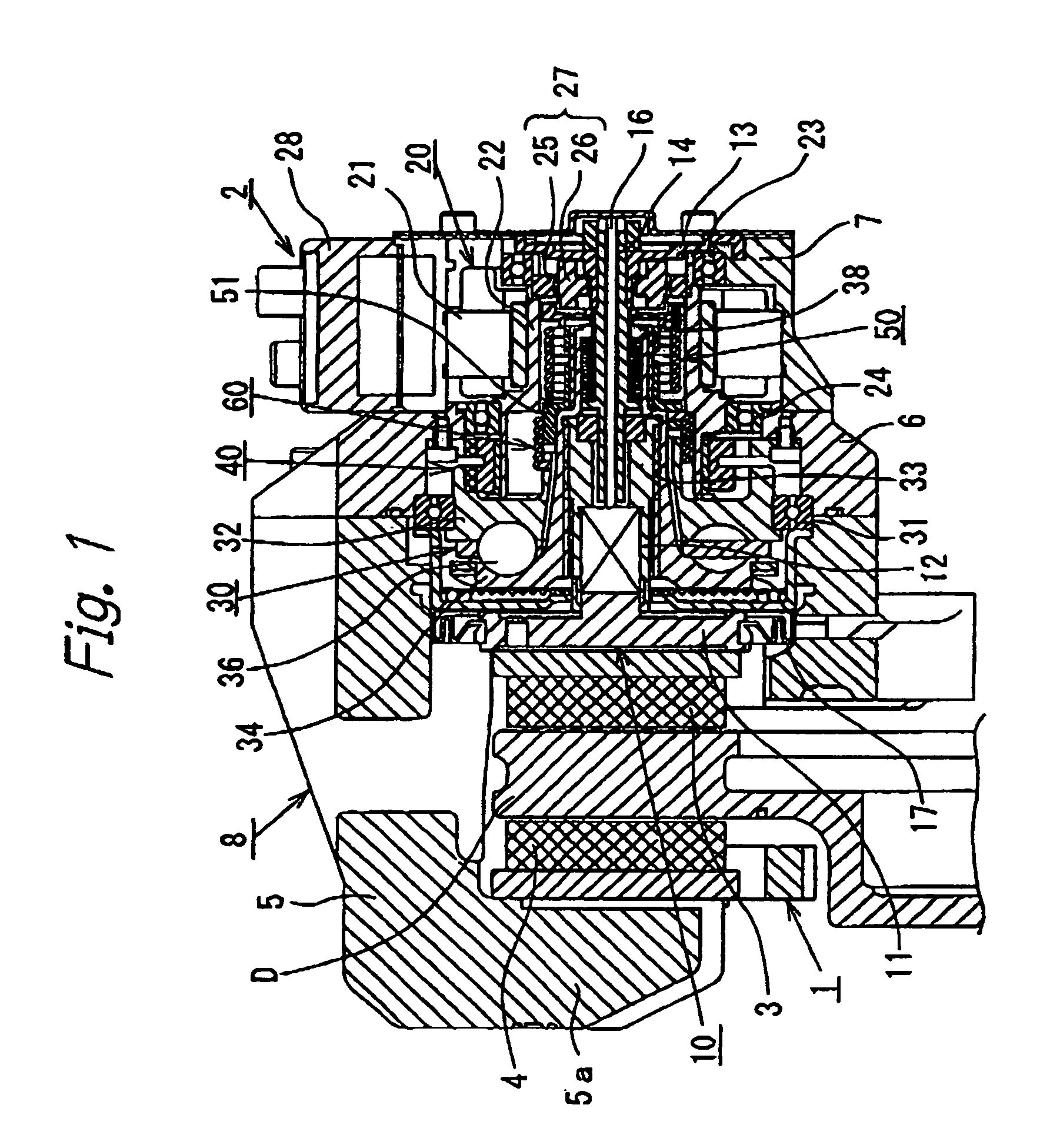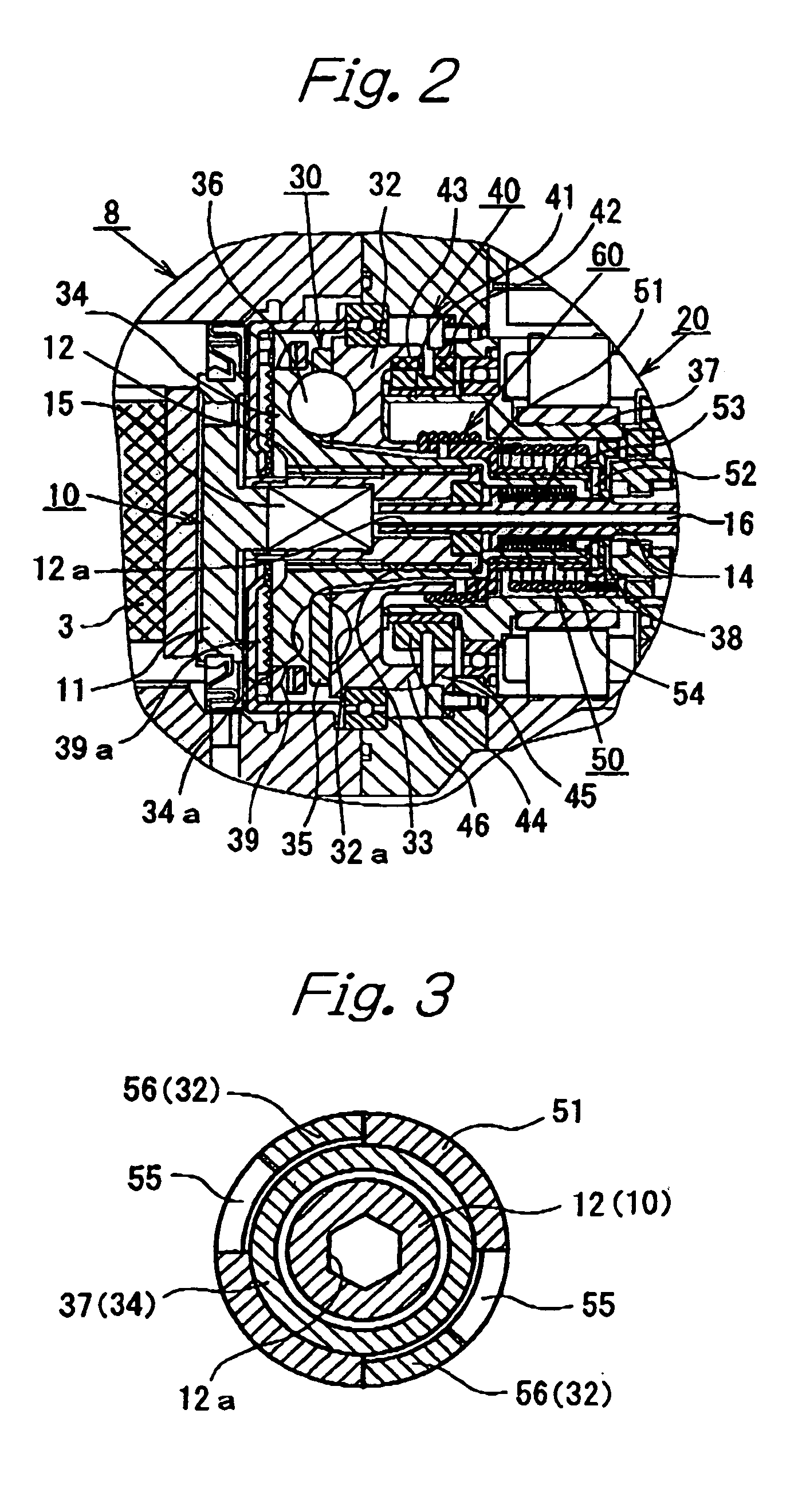Motor-driven disk brake
a technology of disk brake and motor, which is applied in the direction of electrodynamic brake system, mechanical apparatus, transportation and packaging, etc., can solve the problems of increasing the consumption of electric power for rotating the rotor with age, unable to achieve stable operation, and difficult to release the brake, so as to prevent an increase in the size of the caliper
- Summary
- Abstract
- Description
- Claims
- Application Information
AI Technical Summary
Benefits of technology
Problems solved by technology
Method used
Image
Examples
Embodiment Construction
[0017]Embodiments of the present invention will be described below in detail with reference to the accompanying drawings.
[0018]FIGS. 1 and 2 show a first embodiment of the motor-driven disk brake according to the present inventions. In these figures, a carrier 1 is secured to a non-rotating part (e.g. a knuckle) of a vehicle that is located at the inner side of a disk rotor D relative to the vehicle. A caliper 2 is supported by the carrier 1 so as to be floatingly movable in the axial direction of the disk rotor D. A pair of brake pads 3 and 4 are disposed at both sides of the disk rotor D. The brake pads 3 and 4 are supported by the carrier 1 in such a manner as to be movable in the axial direction of the disk rotor D. The caliper 2 has an assembly type caliper body 8 including a claw member 5 having a claw portion 5a at the distal end thereof. The caliper body 8 further includes an annular base 6 connected to the proximal end of the claw member 5, and a motor casing 7 secured to t...
PUM
 Login to View More
Login to View More Abstract
Description
Claims
Application Information
 Login to View More
Login to View More - R&D
- Intellectual Property
- Life Sciences
- Materials
- Tech Scout
- Unparalleled Data Quality
- Higher Quality Content
- 60% Fewer Hallucinations
Browse by: Latest US Patents, China's latest patents, Technical Efficacy Thesaurus, Application Domain, Technology Topic, Popular Technical Reports.
© 2025 PatSnap. All rights reserved.Legal|Privacy policy|Modern Slavery Act Transparency Statement|Sitemap|About US| Contact US: help@patsnap.com



